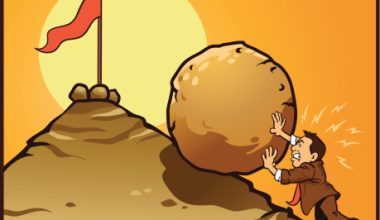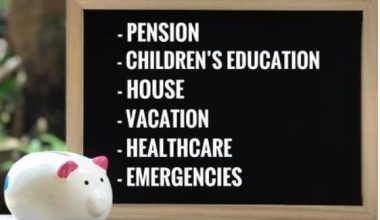A nation’s policies, particularly economic policies, are largely the products of the times they are formulated. Historical contexts, economic circumstances and the ideology of the key decision-makers influence economic thinking and policy. 1940s was the period of anti-colonialism and anti-imperialism. That was also the period of the ascendency of the Soviet Union. Government-led programs like the New Deal for rescuing the US economy from the Great Depression and the Marshall Plan for rebuilding the countries ravaged by the Second World War were successful. This historical context played an important role in shaping the economic policies of many newly independent countries like India.
The Nehruvian era
Nehru’s Fabian socialist thinking and his high regard for the Soviet economic model also played an important role in pivoting India’s economic policy to the left. Consequently, India’s new economic policy was built on the pillars of dominant role for the public sector and comprehensive centralized planning. India adopted the principle of Mixed economy and started implementing Five Year Plans based on the Soviet model. Since Nehru was the tallest leader of that time, criticisms against this policy, coming from leaders like Rajaji didn’t find favor with the vast majority. Nehru’s famous words, “Taj is for the dead, Bakra (Bakra Nangal) is for the living,” reflects his preference for mega projects. Nehru also had a passion for excellence which resulted in the setting up centers of excellence like the IITs, which later played a crucial role in the impressive growth of industries like IT.
The dominant role for the government, comprehensive planning, licensing and the plethora of restrictions put on private enterprise created what Rajaji called the “license-permit-quota Raj”. This ‘license raj’ became, in the words of the eminent jurist and tax expert Nani Palkhiwala, “the world’s leading expert in the art of killing private initiative and stifling enterprise”. Many leading thinkers like the eminent economist Jagdish Bhagwati argued in favor of liberalization. But it didn’t find favor with the dominant political thinking in India.
The Indira Gandhi years
The period 1962-74 was tough for Indian economy. This twelve-year period saw the nation waging three wars, two serious droughts, a massive devaluation of the Indian rupee by a massive 36 percent in 1966 and the first Oil Shock of 1973. This period witnessed political tremors too. The split in the Congress and the emergence of Indira Gandhi as a charismatic and powerful leader steered India’s economic policy more to the left. Bank nationalization came as a bolt from the blue in 1969. Laws like MRTP and FERA were enacted. Corporate tax was raised steeply. Maximum rate of personal income tax was raised to totally irrational 97.5 percent. The 1970s witnessed economic stagnation in India. However, a major success was the Green Revolution that paved the way for food self sufficiency in India.
Rajiv Gandhi’s new beginnings
The India economy grew only by 3.5 percent in the 3 decades following independence. As Manmohan Singh later remarked, “this pale in comparison with the impressive growth of the East Asian countries” which adopted a different economic strategy with focus on private enterprise and export-led growth. Liberalization in India started with Rajiv Gandhi. Reduction in taxes – both corporate tax and personal income tax – amendments to MRTP and promotion of foreign investment were undertaken in earnest. But this initial dose of liberalization relied too much on foreign debt and the Oil shock of 1991 became the last straw on the camel’s back. The economy faced a severe Balance of Payments crisis. India pledged gold with the Bank of England and approached the IMF for loan.
Rao’s bold reform
The crisis triggered big structural reforms in the Indian economy. The collapse of the Soviet Union, the retreat of communism from Eastern Europe and the change in economic policy under the leadership of Deng Xiao Peng in China created a favorable environment for policy change. LPG (Liberalization, privatization and globalization) became the new mantra. These bold reforms initiated under the leadership of Prime Minister Narasimha Rao, ably assisted by his finance minister Manmohan Singh, laid the foundation for an era of high economic growth. During the next 30 years India clocked the second fastest GDP growth in the world, second only to China. All the governments that followed the Rao government stayed on the path of liberalization.
The Modi era
The NDA government under Vajpayee took the economic reform forward. Privatization, politically unpopular in India, was pursued in earnest, amidst political opposition. The UPA 1 and 2 headed by Manmohan Singh couldn’t do much on the reform front.
Modi, a true liberalizer by instinct, is seriously implementing reforms, but there is a shift in nuances. Initiatives like the Bankruptcy Code, RERA (Real Estate Regulation Act) and promotion of digital payments are serious initiatives to usher in a cleaner economy. The JAM (Jandhan Aadhaar Mobile) trinity has proved to be a game-changer in the delivery of social welfare programs. In tune with the ongoing trend of deglobalization, India too is encouraging domestic industry in a big way. The Production Linked Initiative (PLI scheme) focusing on 10 sectors of the economy is progressing well and India is emerging as a major force to reckon with in areas like consumer electronics. This along with rapid strides in India’s IT exports (India’s export earnings from IT services in 2021-22 is higher than Saudi Arabia’s export earnings from crude oil) and strong and steady growth in segments like infrastructure, construction, automobiles and pharmaceuticals have imparted strength to the Indian economy even in Covid times. The China Plus One policy being followed now by the developed countries is turning in India’s favor. During difficult times like now when our neighbors like Sri Lanka, Pakistan and recently Bangladesh have approached the IMF for foreign exchange loans India has foreign exchange reserves of above $ 570 billion and is financially stable. India has the third largest startup ecosystem in the world now. The explosive growth of unicorns (startups with valuation of above $ 1 billion) bodes well for the growth of the Indian economy.
India’s GDP, which was $ 103 billion in 1947 is now $ 3 trillion. We are the sixth largest economy in the World and in purchasing power parity (PPP) the third largest. Our food grain production has multiplied 6 times since independence, from 54.92 million tonnes in 1947 to 305.44 tonnes in 2020-21. Our per capita income (Rs 1.5 lakh in 2021-22) and rank in HDI (Human Development Index) at 131 are still very low by global standards. Even though poverty has declined considerably after the initiation of reforms, we have a long way to go. Only sustained growth for many years and effective social welfare programs can transform India into an inclusive society. As India transforms, hopefully, into a $ 5 trillion economy by 2027, a $7 to $8 trillion economy by 2030 and $20 trillion economy by 2040, this is bound to happen.







